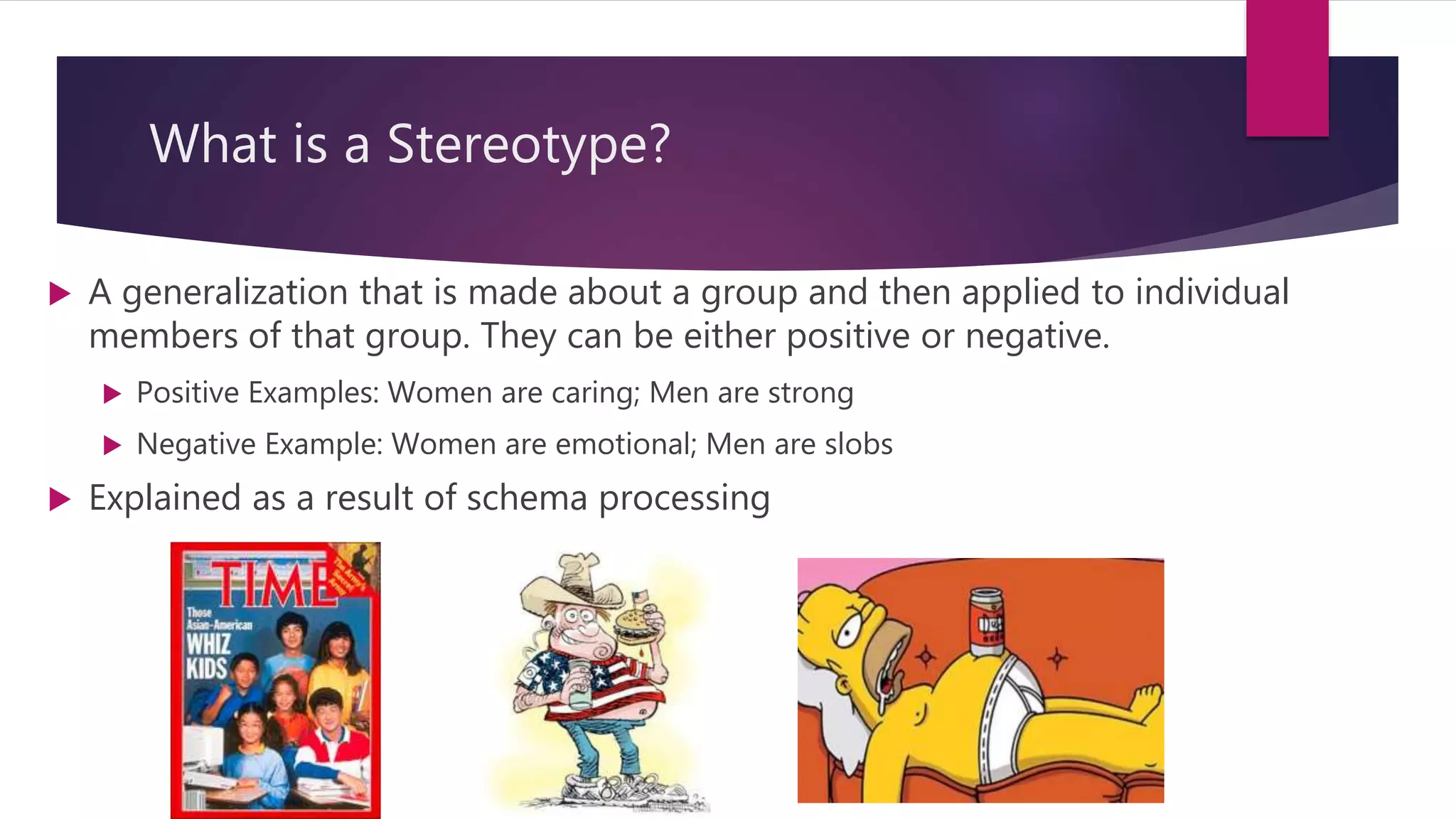This document discusses stereotypes from several perspectives:
1. It defines stereotypes as generalizations made about groups that get applied to individuals. Several theories on the origins of stereotypes are presented, including social categorization and the "grain of truth" hypothesis.
2. Research is summarized that shows how holding stereotypes can impact perceptions and expectations of others. Studies demonstrate stereotypes influence judgments of intelligence and ability.
3. Additional research shows how knowing stereotypes exist about one's own group can negatively impact performance through "stereotype threat."
4. The document ends by reviewing studies on ways stereotypes may be overcome, such as exposing children to counter-stereotypical media portrayals and increasing awareness of implicit biases

























